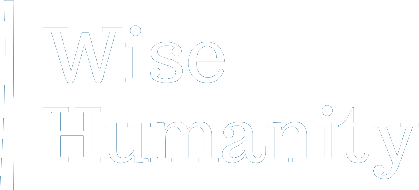Intuition: Light and Darkness
Have you ever struggled to explain a decision you made on your gut feeling or an opinion you formed that feels very right but you don’t know why?
It happens to me all the time. And that struggle often comes with a lot of frustration; why do I find it so complicated to explain something that feels so powerfully right and intuitively obvious to me?
Basically, intuition is one of the many unconscious processes of the brain.
Our awareness is estimated to hold around 4-7 items of information at a time. So, the vast majority of what the brain does – including information processing, problem-solving, and decision-making – occurs without us being consciously aware of it.
And that’s why we struggle to explain something that is intuitively crystal clear to us. We know something without knowing why we know it.
The actual attempt to explain it can kill the creative power of our intuition as, all of a sudden, we’re limiting our brain’s vast processing power to only those 4-7 items we can consciously work with at a time. That’s why we can become so frustrated when trying to explain it.
And that’s also why we’re often afraid of following our intuition… because the underlying basis of it escapes us: we feel a certain decision is right, we struggle to explain why, and therefore we doubt ourselves.
In my work, I often hear people saying, “I’d love to be able to listen to my intuition more.” That’s a cry for authenticity and for unloading the eternal burden of self-doubt off our shoulders.
Unfortunately, there is also a dark side to our intuition, so beware of anyone encouraging you to just follow it blindly. The good news, though, is that you can test and also retrain your intuition.
And, if you ask me, becoming aware of our intuitive processes is an act of great personal responsibility because they play such an important role in our everyday lives. Whenever we have little to no time or little to no data available, we instinctively rely on our intuition to guide us: snap judgment!
For example, very early in our lives, we develop our personal narrative about who's a good person (who gives us cuddles and security) and who's a bad person (whom we're scared of and want to avoid). And we often can carry that same narrative with us for the rest of our lives. Often unconsciously. That's why we're immediately drawn to some people while we're instinctively alarmed by others. With little time or data, we use our intuition to make a snap judgment about a new acquaintance.
In short,
intuition is the voice of knowledge and experience that is so ancient or deeply established that is buried in our unconscious.
If you’re a subject expert on something, you can generally rely on your intuition.
A rare book expert can immediately tell a valuable book from a fraud. An expert chef intuitively knows which ingredients go well together. An expert business leader instinctively feels when an investment opportunity seems dodgy. And so on...
Photo by Andrea Piacquadio on Pexels
However, intuition has a dark side too: prejudice and discrimination, for example, plus loads of other unconscious biases.
Let me share a quite dramatic example about unconscious racial bias, revealed by psychological research, as explained in Malcolm Gladwell’s book, Blink.
Our mainstream culture used to be unconsciously racist for centuries. Today, we’re consciously owning and working on such beliefs (with limited but hopefully increasing success). However, transcending the centuries-old dominant culture can take long and hard inner work..
In the research, people were asked to make snap judgments based on photographs–to do so within seconds, without time to think, thus testing their intuition. Many people were surprised to find that their snap judgements were racially biased. Their conscious values were non-racist, but their intuitions didn’t match their values. They could not rely on their instinct to make a good decision under pressure.
That’s why we need to observe our actual behaviours, not our conscious values.
Our stated conscious values may be totally incompatible with our unconscious attitudes. This is also why behavioural tests like Myers-Briggs do not work as they’re based on stated conscious values, not on actual behaviours.
The good news is that we can retrain even our deepest beliefs.
If you become aware that you may be suffering from a bias, then spend time against it.
If you have an ethnic bias, for example, then spend time with people from a different ethnic group. It’ll change your unconscious bias.
As a less dramatic example, I am gay and, some years ago, I realised the vast majority of my close friends were gay men. It’s not something I deliberately decided. It turns out I’m instinctively drawn to making gay friends and, when I became consciously aware of it, I resolved to proactively work against it and deliberately focus on making more non-gay friends.
The essential bit here is to observe your actual behaviours (not your stated values) and spot your unconscious biases. And then act to create new behaviours.
This way, you retrain your intuition, you can trust it more and more, and ultimately unleash the vast and fast power of your unconscious mind without the constraint of self-doubt.
If you want to learn more about intuition, I recommend Blink by Malcolm Gladwell. It’s a good book and several concepts in this blog come from it.


